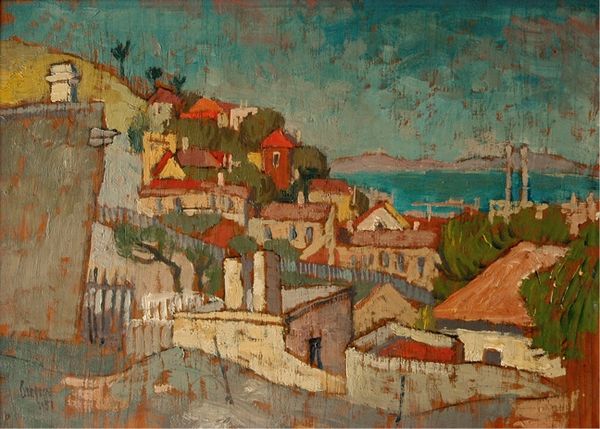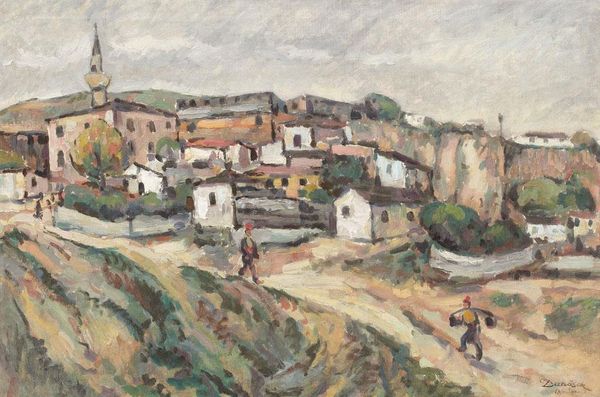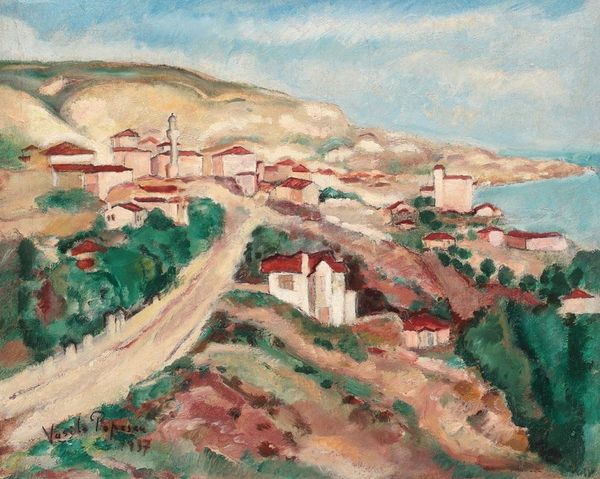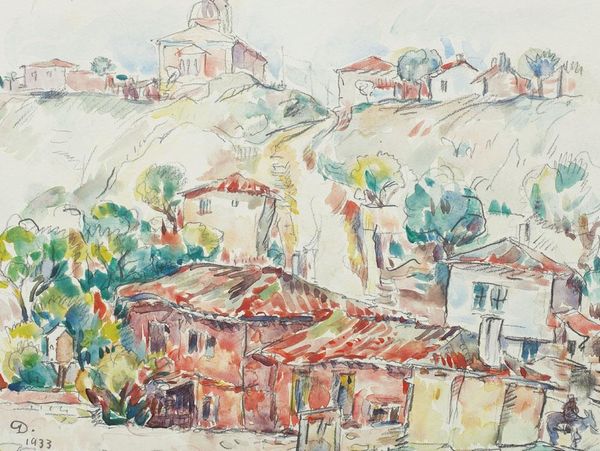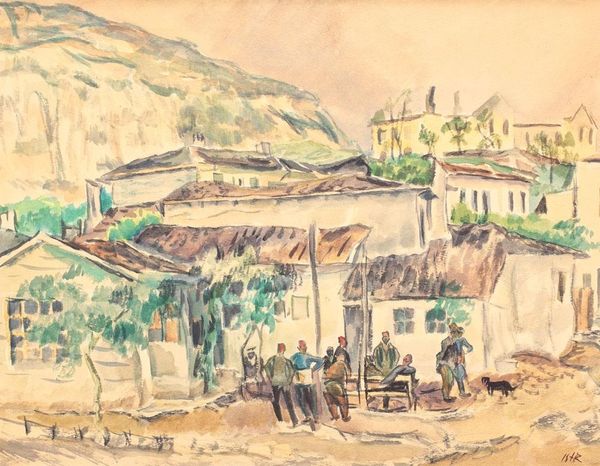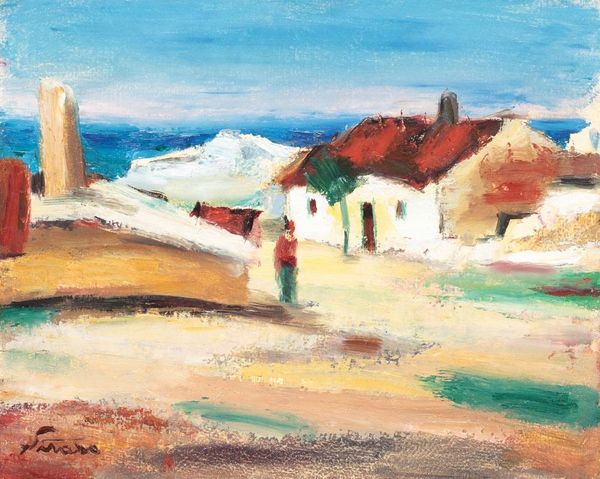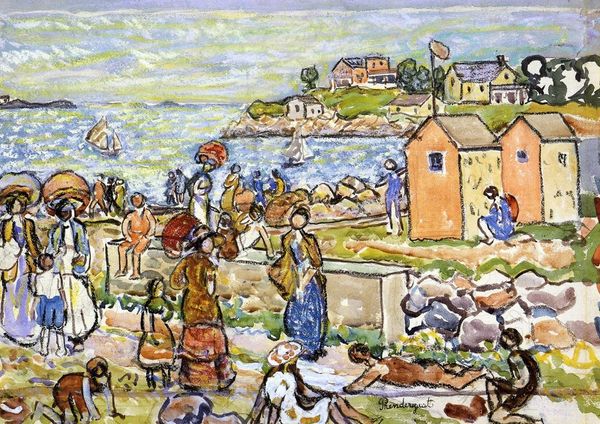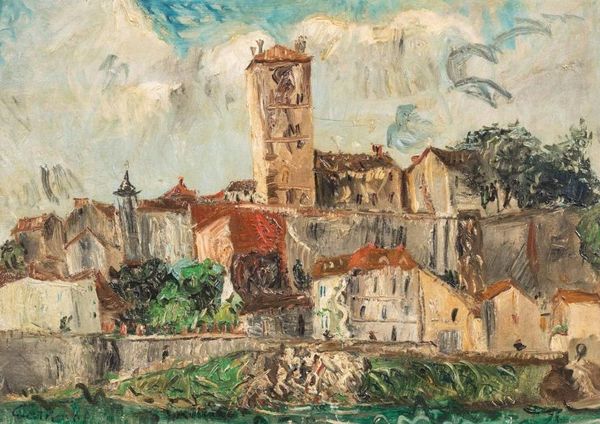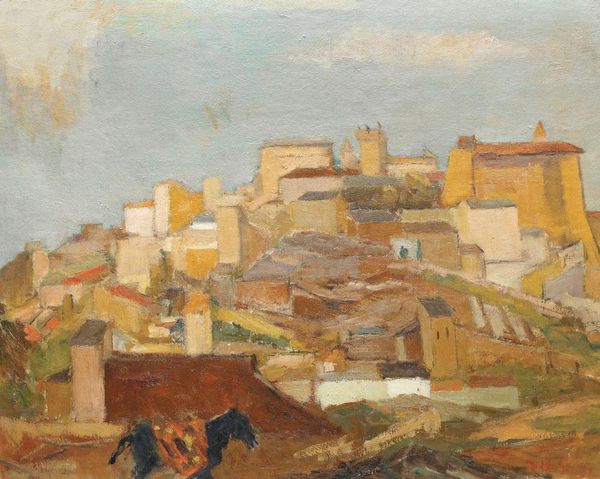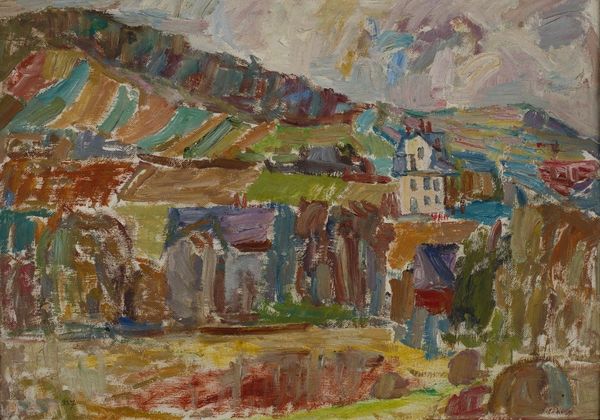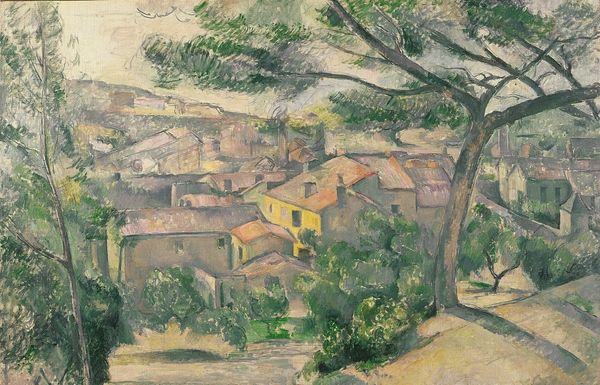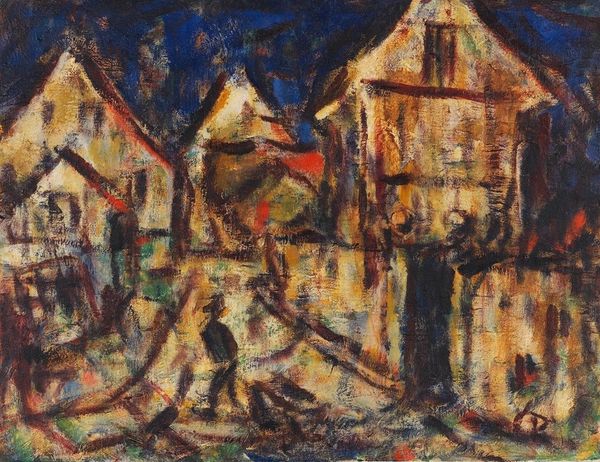
painting, oil-paint
#
abstract painting
#
painting
#
oil-paint
#
landscape
#
handmade artwork painting
#
oil painting
#
genre-painting
#
modernism
Copyright: Public Domain: Artvee
Editor: This is "View from the Bridge in Espaly" by Tadeusz Makowski, painted in 1920 using oil paints. The composition feels dense, almost like a tapestry woven with houses and figures. What symbolic meaning do you see in such a crowded landscape? Curator: The tightly packed composition, reminiscent of medieval cityscapes, speaks to the collective identity of this village. Notice how the houses, all crowned with terracotta roofs, huddle together as if seeking mutual support. Doesn't this arrangement reflect a deep-seated need for community, a sense of belonging rooted in shared history and hardship? Editor: Absolutely! And the people in the foreground, working the land... it’s as if they’re inextricably linked to the place. Is Makowski saying something about the human connection to the land? Curator: Precisely. Observe the figures carrying scythes, or the oxen pulling heavy carts. These are age-old symbols of labor, connecting the inhabitants to generations past. Their repetitive actions evoke a cyclical view of time, reinforcing the idea that life is interwoven with the rhythms of the earth. Consider, too, the warm palette – those earthy ochres and siennas suggest a profound sense of grounding, don’t they? Editor: Yes, I see it. There’s a timeless quality to the scene, as though it exists outside the modern world. Curator: Indeed. While painted in 1920, the painting shies away from the mechanical aesthetics of the industrial era, embracing instead enduring symbols of communal life and human dependence on nature. We see memory preserved. Editor: I hadn’t thought about the painting as a preservation of cultural memory. Curator: Consider how the artist distorts perspective, favoring emotional resonance over strict realism. The artist seems determined to weave us into the symbolism itself. How can we forget this artwork? Editor: It certainly gives you a lot to think about, connecting the past and present.
Comments
No comments
Be the first to comment and join the conversation on the ultimate creative platform.
